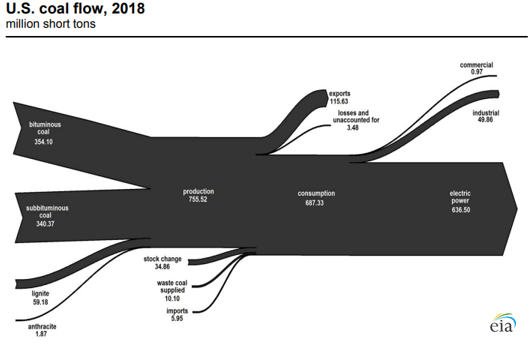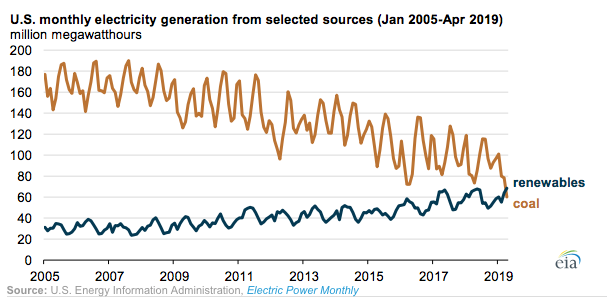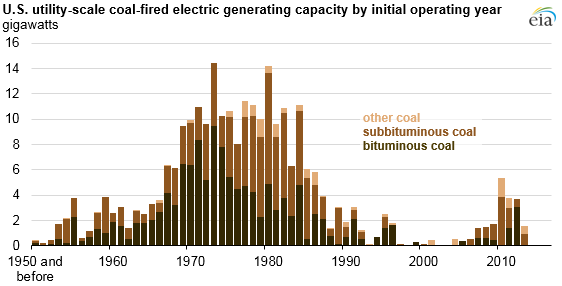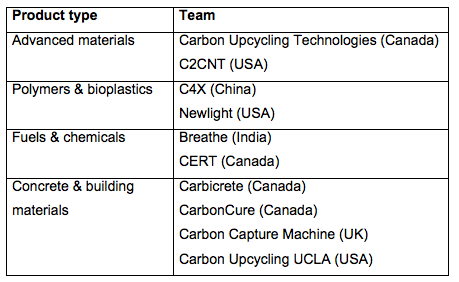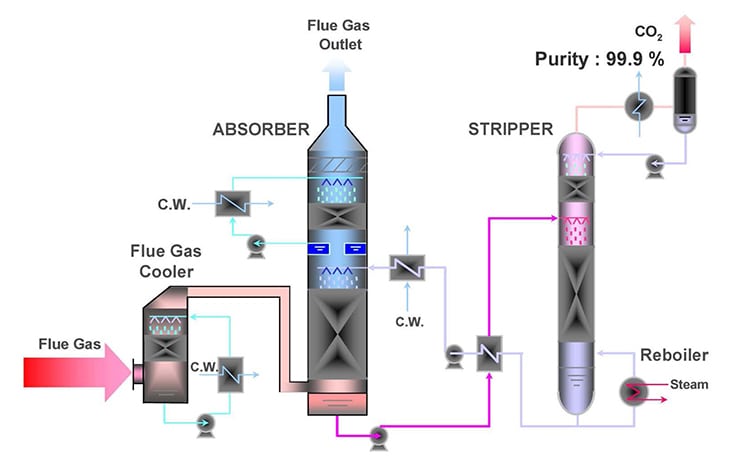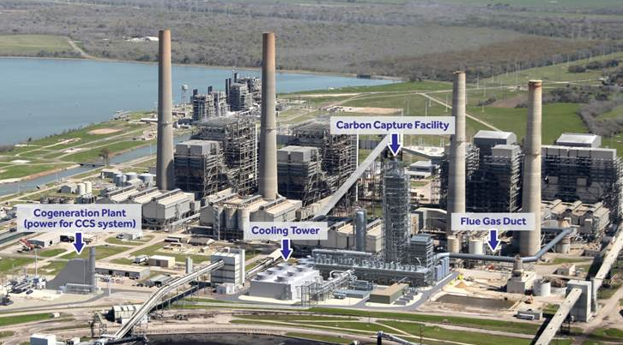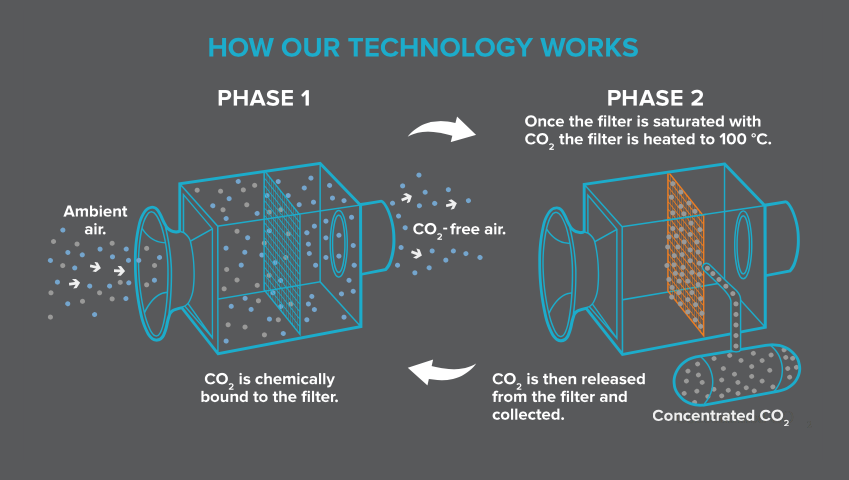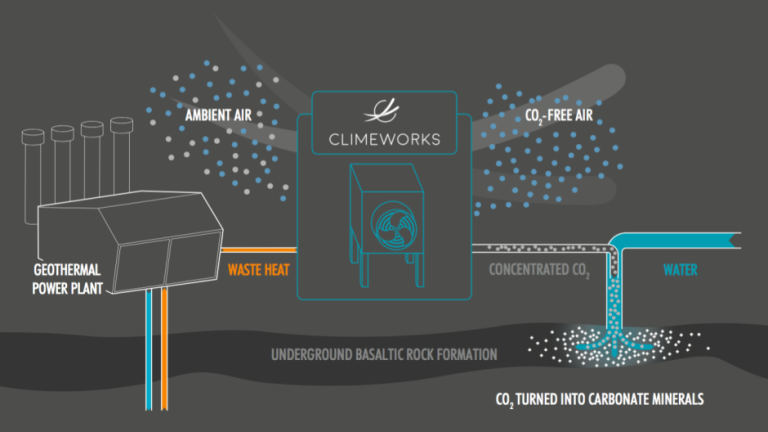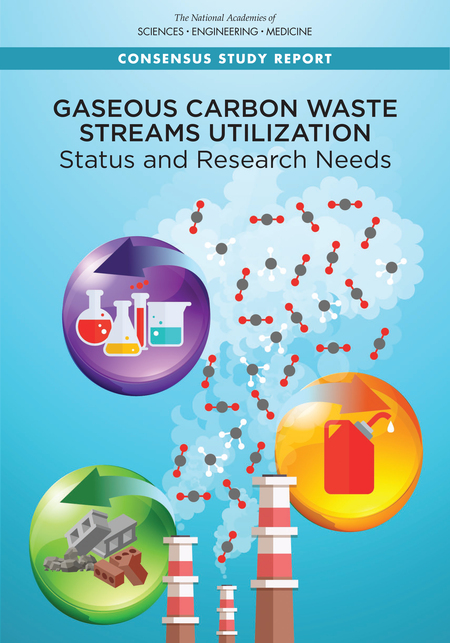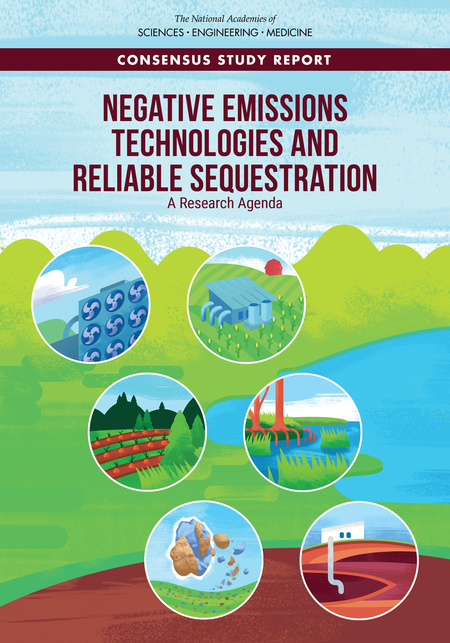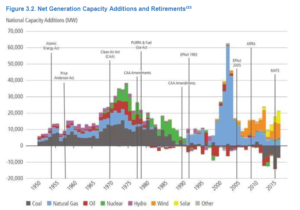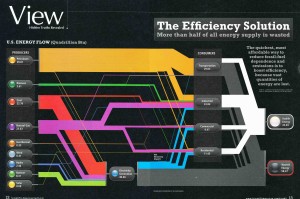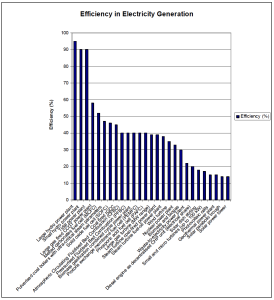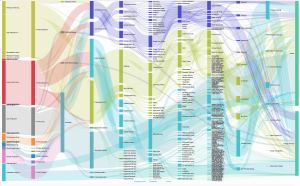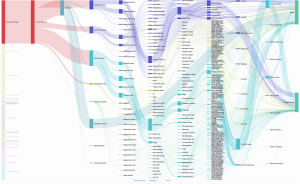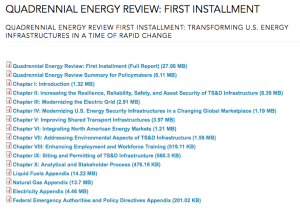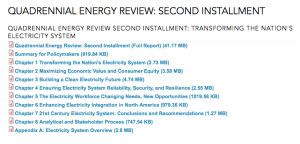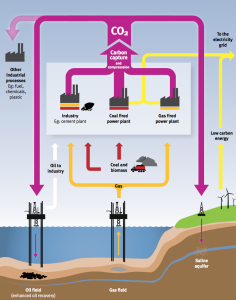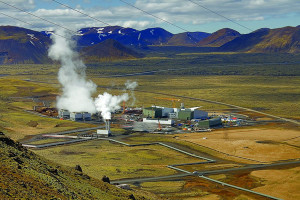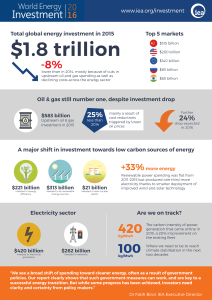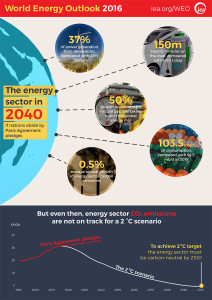Updated 16 December 2019, 20 March & 5 May 2020
Peter Lobner
In a 12 December 2019 NUCNET article, David Dalton, reporting on the United Nations Framework Convention on Climate Change (COP25) in Madrid, summarized the following points made by International Atomic Energy Agency (IAEA) director-general Rafael Mariano Grossi:
- The world is “well off the mark” from reaching the climate goals of the Paris Agreement.
- Around two-thirds of the world’s electricity still is generated through burning fossil fuels.
- Greater use of low-carbon nuclear power is needed to ensure the global transition to clean energy includes a baseload backup to variable renewable energy sources such as solar and wind.
- Greater deployment of a diverse mix of low-carbon sources such as hydro, wind and solar, as well as nuclear power, and battery storage, will be needed to reverse that trend and set the world on track to meet climate goals.
I concur with these points and feel that Mr. Grossi has laid out a reasonable and responsible position on the future role of nuclear power in “green” energy solutions that are focused on the primary goal of reducing worldwide carbon dioxide emissions. The commercial nuclear power industry has demonstrated the ability to reliably generate carbon-free electricity, 24 hours a day, seven days a week, in units of a thousand megawatts or more per power plant. Except for the largest hydroelectric facilities, no other component of a carbon-neutral energy infrastructure offers such capabilities, which are essential for delivering 24/7 service to large users and stabilizing the grid. Unfortunately, Mr. Grossi’s view is not shared by many EU energy advocates seeking to get member states to agree to the EU “Green Deal.”
You can read David Dalton’s complete article here: https://www.nucnet.org/news/nuclear-and-renewables-are-not-in-competition-with-each-other-12-4-2019
The EU Energy Union and the “Green Deal”
The European Energy Union is the implementation of the 2019 Juncker Commission’s Priority #3 recommendation for a resilient energy union with a forward-looking climate change policy. You can read a summary of the Commission’s recommendations here: http://www.europarl.europa.eu/RegData/etudes/IDAN/2019/637943/EPRS_IDA(2019)637943_EN.pdf
The Energy Union has quite a challenge, starting with the EU’s energy mix (circa 2016) as shown in the following chart:
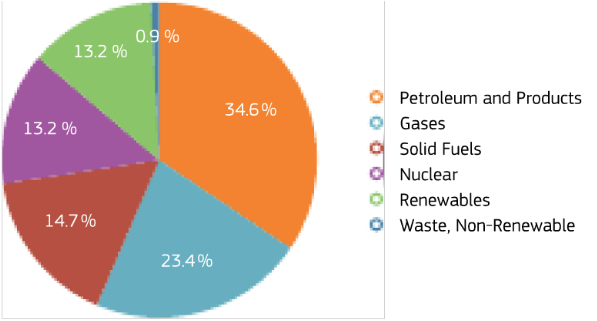
Complicating matters, the EU currently imports nearly 40% of its natural gas from Russia.
The European Union’s Green Deal is described as “a new growth strategy that aims to transform the EU into a fair and prosperous society, with a modern, resource-efficient and competitive economy where there are no net emissions of greenhouse gases in 2050 and where economic growth is decoupled from resource use.” You’ll find the EU’s 11 December 2019 detailed description of the Green Deal here: https://eur-lex.europa.eu/legal-content/EN/TXT/?qid=1576150542719&uri=COM%3A2019%3A640%3AFIN
For more information, see the EU “Green Deal” website here: https://ec.europa.eu/info/index_en
To enforce this “Green Deal,” the EU intends to adopt a “climate law” that is scheduled to be presented to Member States in March 2020.
The EU’s “Green Deal” is strongly biased against almost anything except renewable energy sources
On 11 December 2019, Reuters reported that, “European Union states have blocked a set of new rules governing which financial products can be called ‘green’ and ‘sustainable’, EU officials said, in a major setback for the bloc’s climate ambitions.” The Reuters report noted that EU lawmakers wanted nuclear and fossil fuel funding clearly excluded from the definition of “green” investments. You can read this Reuters report here: https://af.reuters.com/article/commoditiesNews/idAFL8N28L3GD
This EU position is a particular problem for France, where nuclear power provided 71.7% of total French generating capacity in 2018 and about 90% of total electrical capacity was provided by low-carbon sources (nuclear + renewables). In October 2019, Électricité de France announced that it is planning to make a decision in 2021 on building several more large nuclear power plants, which will be needed in the next decade as its oldest 900 MWe pressurized water reactor (PWR) plants start reaching their retirement age.
In contrast, nuclear power provided 11.8% of total German generating capacity in 2018 and about 47% of total electrical capacity was provided by low-carbon sources (nuclear + renewables), while 48.3% of total generating capacity was provided by a fossil fuel sources. Germany plans to decommission the last of its seven remaining nuclear power plants, representing an aggregate of 9,256 MWe of carbon-free electric generating capacity, in the next three years, by December 2022. It will be a challenge for new renewable energy sources to be deployed in time to make up for the lost carbon-free generating capacity from nuclear power. It is notable that Germany gets 7% of its total generating capacity from burning biomass, which the EU, in its great wisdom, defines as a carbon-neutral renewable energy source. More on that later.
How does the EU define “clean energy”?
The EU’s definition of “clean energy” is rather elusive. On the EU Green Deal website, the Clean Energy fact sheet identifies the following three “key principle:”
- Prioritize energy efficiency and develop a power sector based largely on renewable sources
- Secure and affordable EU energy supply
- Fully integrated, interconnected and digitalized EU energy market
Only “renewable sources” are actually defined as sources for “clean energy.” Nuclear power is not identified as a “clean” energy source. I was unable to find on the EU Green Deal website any performance metrics related to “clean” energy source performance relative to carbon emissions.
Here’s the link to the EU Clean Energy Fact Sheet: https://ec.europa.eu/commission/presscorner/detail/en/fs_19_6723
Another EU description of “clean energy” can be found the “Clean Energy for all Europeans” program, which focuses on the following:
- Energy efficiency first, focusing on energy saving opportunities and “smarter” / “greener” buildings.
- More renewables, with a new target of at least 32% in renewable energy by 2030
- Better governance of the Energy Union, including a new energy “rulebook” under which each EU Member State drafts a National Energy and Climate Plan (NECP)
- More rights for consumers to produce, store or sell their own energy
- Smarter and more efficient electricity market
The Clean Energy for all Europeans program is described here: https://ec.europa.eu/info/news/clean-energy-all-europeans-package-completed-good-consumers-good-growth-and-jobs-and-good-planet-2019-may-22_en
The focus is on a distributed electric power infrastructure that takes advantage of many ways to improve energy efficiency, manage power consumption and generate power from distributed renewable energy sources. Nuclear power is not mentioned at all in this document. However, “large scale biopower” from agricultural and forest sources is addressed.
How does the EU define “renewable energy sources”?
The latest EU directive on the promotion of energy use from renewable sources is Directive (EU) 2018/2001, dated 11 December 2018. The definition of “renewable energy sources” traces back to Directive 2003/54/EC, dated 26 June 2003:
“Renewable energy sources” means renewable non-fossil energy sources (wind, solar, geothermal, wave, tidal, hydropower, biomass, landfill gas, sewage treatment plant gas and biogases)
So, fossil energy sources are excluded and nuclear energy sources are not included.
This seems logical but the devil is in the details. The main problem is that EU energy policy equates “renewable” with being “carbon free,” when, for some renewable energy sources, this is far from the truth. As an example, existing EU policy treats burning wood fuel in power plants as carbon-neutral while this fuel generates 15 to 20% more carbon dioxide per megawatt than the coal fuel it replaces. This has resulted in a trend among EU coal-burning power plants to switch to wood pellets and claim the emission credit while actually polluting more than before. See my 7 January 2017 post, “Hey, EU!! Wood may be a Renewable Energy Source, but it isn’t a Clean Energy Source,” for details. The direct link to this post is here: https://lynceans.org/all-posts/hey-eu-wood-may-be-a-renewable-energy-source-but-it-isnt-a-clean-energy-source/
Fortunately, this matter may be on its way to being addressed in an EU court. A 4 March 2019 article by Karen Savage, writing for Climate Liability News, reports, “The suit, which was filed in the European General Court in Luxembourg, asks the court to prevent EU countries from counting forest wood as a renewable energy source under the 2018 revised Renewable Energy Directive known as RED II.” Major sources of wood pellets used in EU power plants are in the southeast U.S., where greatly increased logging activities are depleting established, slow-growth hardwood forests. So the EU is OK with a “clean” energy policy that, in practice, increases current pollution locally in the EU while simultaneously stripping hardwood forests in a location outside of the EU. It seems to me that this is an environmental “double whammy” that can only make sense on paper, but not in practice. You can read Karen Savage’s article here: https://www.climateliabilitynews.org/2019/03/04/biomass-european-union-lawsuit/
Conclusions
Regarding the EU Green Deal and Energy Union, I’m certain that the devil is in the details, and EU Member States need to have the opportunity to assess these details so there is no misunderstanding when EU climate laws are passed.
The EU’s Green Deal has major flaws and needs to be recast to acknowledge the important role that nuclear power can play as a large, carbon-free source of electric power while also helping to ensure 24/7 grid stability. Failing to recognize the role of nuclear power as a carbon-free source of electric power will serve to highlight the strong bias and hypocrisy of an EU energy leadership that has lost its way. It also would serve as another example of why Brexit makes sense.
Even fossil power, with appropriate advanced environmental controls, should have a role in the Green Deal. For example, a rapid shift away from coal to natural gas would significantly decrease near-term carbon dioxide emissions. Similarly, abandoning the laughable EU policy on “carbon-neutral” biomass would eliminate a significant source of carbon dioxide emissions within the EU, and it would save environmentally valuable hardwood forests in the southeast U.S. and elsewhere.
Update: 16 December 2019 – Finally, some common sense prevailed, but only under very intense political pressure and, probably, fear of failure
In an article by Samuel Petrequin, “EU leaders include nuclear energy in green transition,” the Associated Press reported:
“EU heads of state and government agreed that nuclear energy will be recognized as a way to fight climate change as part of a deal that endorsed the climate target. While Poland did not immediately agree to the plan, the concessions on nuclear energy were enough for the Czech Republic and Hungary to give their approval. The two nations had the support of France, which relies on nuclear power for 60% of its electricity. They managed to break the resistance of skeptical countries, including Luxembourg, Austria and Germany to get a clear reference to nuclear power in the meeting’s conclusions. ‘Nuclear energy is clean energy,’ Czech Prime Minister Andrej Babiš said. ‘I don’t know why people have a problem with this.’”
You can read the complete AP article here: https://apnews.com/faae3503fe497af36e8d2e9a4d13b62a
The European Council memorandum contains only a single reference to “nuclear,” more in the form of a resigned acknowledgement rather than an endorsement.
“The European Council acknowledges the need to ensure energy security and to respect the right of the Member States to decide on their energy mix and to choose the most appropriate technologies. Some Member States have indicated that they use nuclear energy as part of their national energy mix.”
You can read the European Council memorandum here: https://www.consilium.europa.eu/media/41768/12-euco-final-conclusions-en.pdf
Congratulations to the representatives from France, Czech Republic, Hungary, Poland and others for fighting the hard political fight and winning a place for nuclear power in the EU’s Green Deal. But be watchful because the EU anti-nuclear forces are still there.
Update: 20 March 2020 – Yes, the EU anti-nuclear forces are still there.
On 10 March 2020 the European Commission issued a press release announcing its new industrial strategy, “Making Europe’s businesses future-ready: A new Industrial Strategy for a globally competitive, green and digital Europe.” You can read the press release and download related documents here: https://ec.europa.eu/commission/presscorner/detail/en/ip_20_416
While the plan highlights the need to “secure a sufficient and constant supply of low-carbon energy at competitive prices,” the word “nuclear” is notably absent from the EU’s industrial strategy. Not much of a surprise, considering the EU’s behavior on the Green New Deal.
The next day, on 11 March, the Brussels-based nuclear industry group Foratom called on the EU decision-makers to support the nuclear sector’s important role within the EU economy. Foratom’s Director General, Yves Desbazeille, noted, “Not only is it (nuclear) low-carbon, it is also flexible, dispatchable and cost-effective”.
Foratom highlighted the following key attributes of nuclear energy in the context of the EU industrial strategy:
- Maintain the competitiveness of Europe’s industry as energy often accounts for a significant share of manufacturing costs,
- Decarbonize industry and thus contribute towards the 2050 carbon neutrality target,
- Provide industry with the energy it needs when it needs it, which is particularly important for processes which run 24/7,
- Other industries by offering alternative sources of decarbonized energy such as hydrogen and heat (sector coupling).
You can read Foratom’s complete statement here: https://www.foratom.org/press-release/foratom-calls-for-the-eu-to-recognise-nuclear-as-a-strategic-industry/
This is further evidence that EU nuclear energy advocates are fighting an uphill battle for recognition by the entrenched EU bureaucracy that nuclear power is a zero-carbon source of power and it can make an important (and maybe essential) contribution to meeting the EU’s 2050 carbon neutrality goal.
Best wishes to Foratom in their efforts to secure a place in the EU industrial strategy for nuclear power.
Update 5 May 2020 – More support for EU nuclear power
SNETP (Sustainable Nuclear Energy Technology Platform) was established in 2007, with EC support, as a group of non-governmental organizations that promote and coordinate research on nuclear fission.
On 24 April 2020, SNETP sent a letter, endorsed by more than 100 organizations, to the Vice-presidents of the European Commission and the EU Commissioner for Energy calling for a “just and timely assessment of nuclear energy in the EU Taxonomy of Sustainable Finance.”
When enacted, the EU’sTaxonomy Regulation is intended to be a tool to guide future energy investments by providing investors with information on which activities and technologies contribute to the EU’s sustainability goals. In their March 2020 final recommendations, the technical expert group (TEG) currently advising the EC on sustainable energy finance did not include nuclear power as a low-carbon and sustainable electricity source.
You can download the SNETP letter and see the logos of the many endorsing organizations here: http://www.snetp.eu/wp-content/uploads/2020/04/NGO-Civil-society-on-Taxonomy-2020.pdf
Clearly, the battle lines have formed, with the anti-nuclear elements of the EU bureaucracy on one side and organizations like Foratom and SNETP on the other. Against the behemoth EU bureaucracy, my best wishes go out to the underdogs, Foratom, SNETP, and other organizations and individuals that understand how nuclear power can play important roles in helping the EU achieve climate neutrality by 2050.
For more information:
- EU energy in figures: statistical pocketbook 2018: https://www.buildup.eu/en/practices/publications/eu-energy-figures-statistical-pocketbook-2018
- EU Directive (EU) 2018/2001, dated 11 December 2018, on the promotion of the use of energy from renewable sources: https://eur-lex.europa.eu/legal-content/EN/TXT/PDF/?uri=CELEX:32018L2001&from=EN
- EU Directive 2003/54/EC, dated 26 June 2003, concerning common rules for the internal market in electricity: https://eur-lex.europa.eu/LexUriServ/LexUriServ.do?uri=CONSLEG:2003L0054:20080123:EN:PDF
- “Scientists demand proper assessment of nuclear in EU Taxonomy,” Nuclear Engineering International, 4 May 2020: https://www.neimagazine.com/news/newsscientists-demand-proper-assessment-of-nuclear-in-eu-taxonomy-7903975
